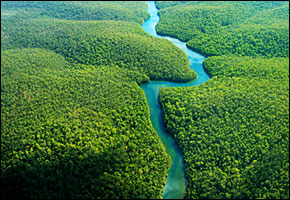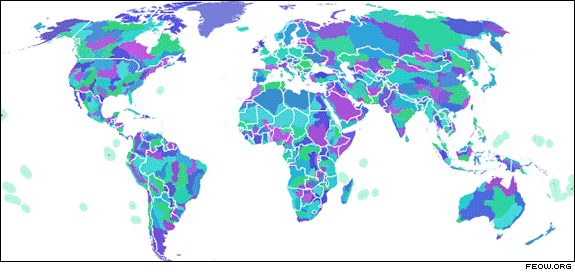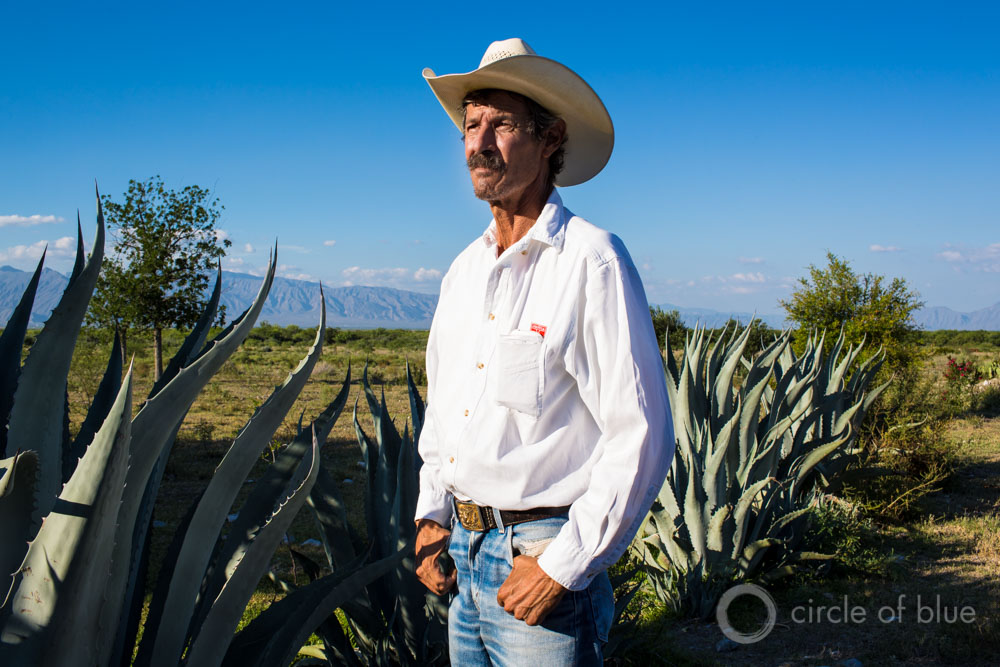New tool visualizes freshwater ecoregions

by C.T. Pope
Circle of Blue
In South America alone, over 465 new freshwater fish species have been discovered in the last five years. That’s the equivalent of finding a new species every four days. Many of these newly discovered fish species are in limited ranges and exist nowhere else on the planet.
Globally, freshwater covers less than 0.8 percent of the Earth’s surface, yet harbors nearly 6 percent of the planet’s described species. Despite this staggering biodiversity, no comprehensive tool to track, manage, and understand global freshwater systems has been available, until now.
In a joint effort, the World Wildlife Fund (WWF) and The Nature Conservancy (TNC) have released the first comprehensive global map and database of freshwater biodiversity. The tool, available online, goes far beyond tracking global freshwater systems.
Targeted not only at researchers and scientists, it aims to inform policy makers, conservationists, and investors on the richness and fragility of the freshwater systems in their regions.
“One of the primary goals of the Freshwater Ecoregions of the World project is to help international agencies, working at a global or regional level, prioritize where they want to invest in freshwater conservation,” said Robin Abell, senior freshwater conservation biologist for the WWF, in an interview with Circle of Blue.
Among other firsts, the project combines distribution data on all freshwater fish, amphibians, turtles, and crocodiles from all inland water systems on the planet.
Preserving the biodiversity of these freshwater systems may be paramount to maintaining their usefulness to the human communities they serve.
“What is good for a freshwater species is going to be good for the freshwater ecosystem. By protecting these ecosystems, we are preserving the functions that underpin the ecosystem services on which people rely,” Abell said. These services include water filtering capacity, freshwater fishery health, and flood control, among others.
Even before its official release, the freshwater ecoregions map proved a key tool for freshwater management in South America. Using the preliminary ecoregions, the government of Brazil became the first South American country to implement a comprehensive sustainable freshwater management plan, which will extend until at least 2020.
Preserving biodiversity in regions like the Amazon River basin is key to the continued health of these freshwater systems, experts say. Brazil alone has more freshwater fish species than any other country on the planet and the conservation of Amazonian freshwater and terrestrial ecosystems is integrally linked.
WWF and TNC have identified 426 distinct freshwater ecoregions across the globe. In their initial survey, the scientists found that at least 55 of these regions are under high stress from surface water use, which will likely lead to the further decline of already threatened species and habitats. In 59 ecoregions, the researchers found that nearly 50 percent of the regions’ land area has already been converted for agricultural, industrial, and urban purposes.
As human communities continue to expand and as water systems become more taxed, informed policy making integrating plans to maintain biodiversity of freshwater systems will be vital for both the continued health of these water systems and for the overall preservation of these critical natural environments.
Said Abell of the WWF: “The project is providing information for anyone on Earth to use to learn about freshwater systems anywhere. This is the most comprehensive look at the world’s freshwaters. Previous assessments only looked at hotspots and major river basins.”
Resources:
Freshwater Ecoregions of the World
www.feow.org
Brazil Adopts Freshwater Ecoregions in First National Freshwater
Management Plan — TNC Press Release
Map: Freshwater Ecoregions of the World, provided by WWF/TNC
Circle of Blue’s east coast correspondent based in New York. He specializes on water conflict and the water-food-energy nexus. He previously worked as a political risk analyst covering equatorial Africa’s energy sector, and sustainable development in sub-Saharan Africa. Contact: Cody.Pope@circleofblue.org






Leave a Reply
Want to join the discussion?Feel free to contribute!